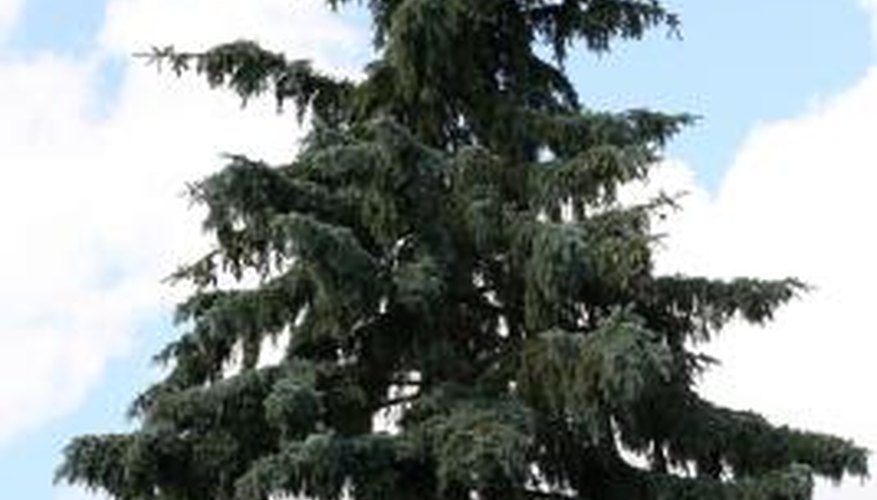Clay soil is a problem that gardeners and landscapers all over the country have to deal with. Matching a tree to the right type of soil is essential to that tree's survival. Unfortunately, few trees grow well in clay. Clay compacts easily and usually drains poorly, but you can still choose a number of conifers that will survive, if not thrive, in soils with high clay content.
Firs
Two types of fir trees -- white fir and balsam fir -- tend to do well in clay soils. White fir, a native to the Rocky Mountains, is hardy to USDA hardiness zone 4, and grows with a pyramidal shape and soft, bluish evergreen foliage. It prefers soil with medium to high moisture levels. Balsam fir comes from wooded areas in Canada and the Northern United States. Hardy to zone 3, it prefers acidic soil and rarely exceeds 75 feet in height.
- Two types of fir trees -- white fir and balsam fir -- tend to do well in clay soils.
Spruces
Norway spruce and Black Hills spruce both fare well in clay soils. Norway spruce, though native to Europe, is widely grown in the United States, where it typically reaches a height of 50 feet, with a broadly columnar formation. It has moderate to high moisture requirements and, like Black Hills Spruce, is hardy to zone 4. Black Hills spruce, a North American variety, is similar in appearance but has darker foliage and tends to be smaller.
- Norway spruce and Black Hills spruce both fare well in clay soils.
- Norway spruce, though native to Europe, is widely grown in the United States, where it typically reaches a height of 50 feet, with a broadly columnar formation.
Pines
A number of pine trees can tolerate clay soil; these include Austrian pine, Scots pine, white pine, Ponderosa pine and limber pine. Scots and white pines are hardy to zone 3, and prefer acidic soil with moderate moisture levels. Austrian, Ponderosa and limber pines are hardy to zone 4 and grow best in soil with a near-neutral pH and low to moderate moisture.
Larch
Though not the best-known coniferous tree, European larch is one of the best for clay soil. Pyramid-shaped and with a height of about 75 feet, it grows well in hardiness zone 4, but will survive up to zone 2. European larch is unusual in that it has the needle-like leaves typical of conifers, but is actually a deciduous tree, shedding its leaves in fall and growing them again the following spring. It grows best in moist conditions.
- Though not the best-known coniferous tree, European larch is one of the best for clay soil.
- European larch is unusual in that it has the needle-like leaves typical of conifers, but is actually a deciduous tree, shedding its leaves in fall and growing them again the following spring.
